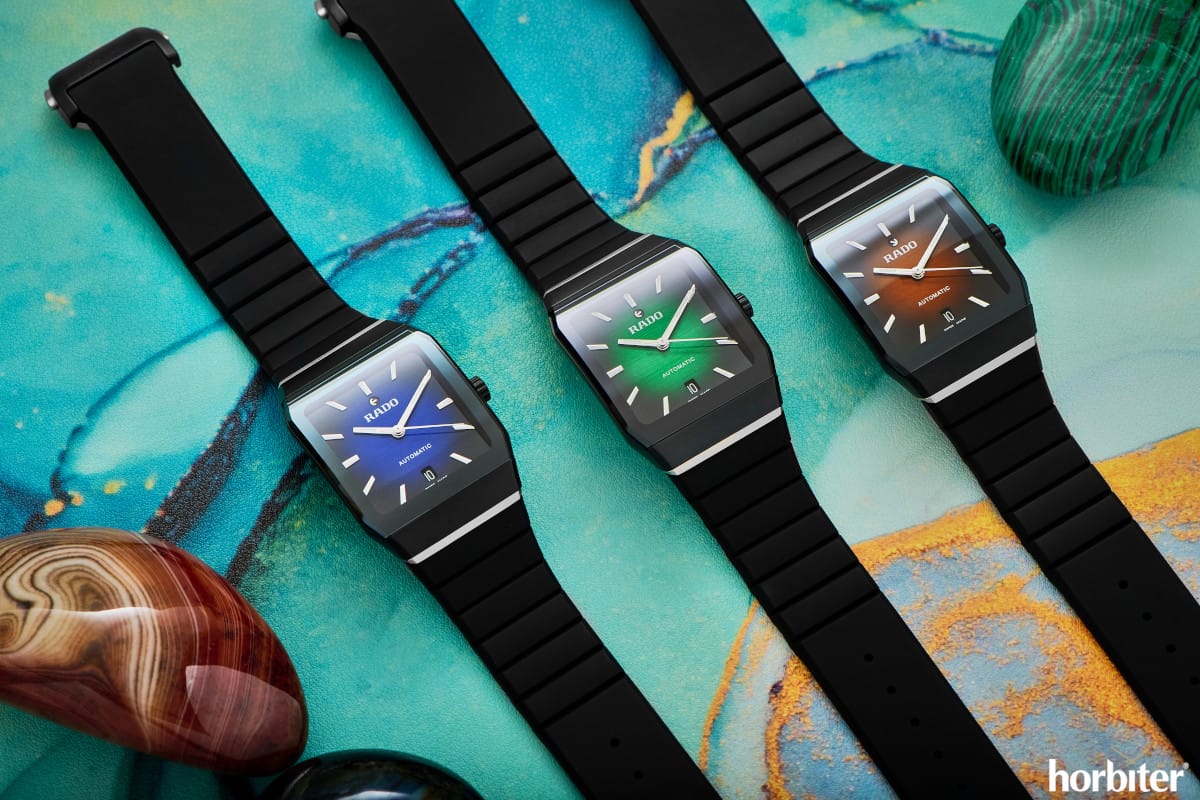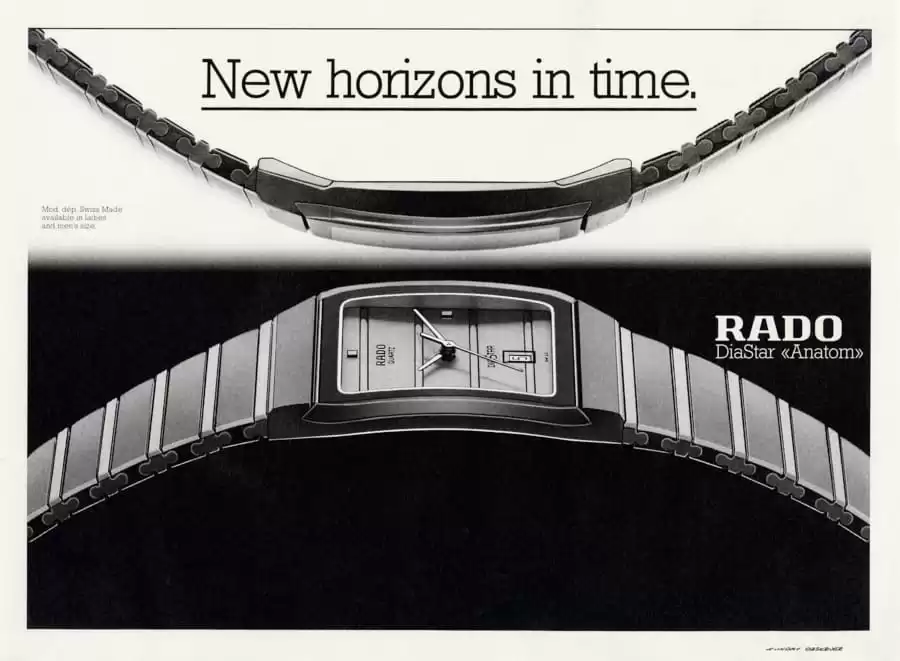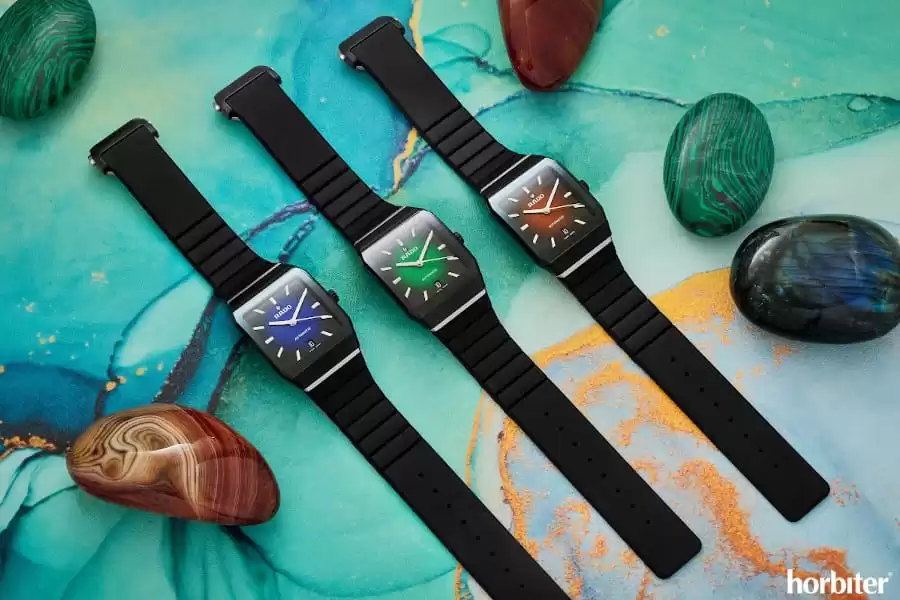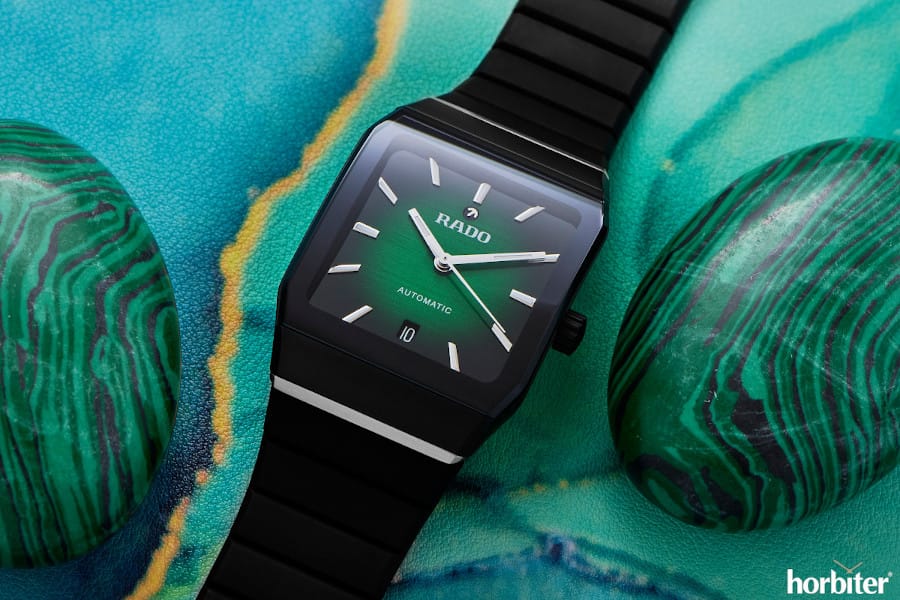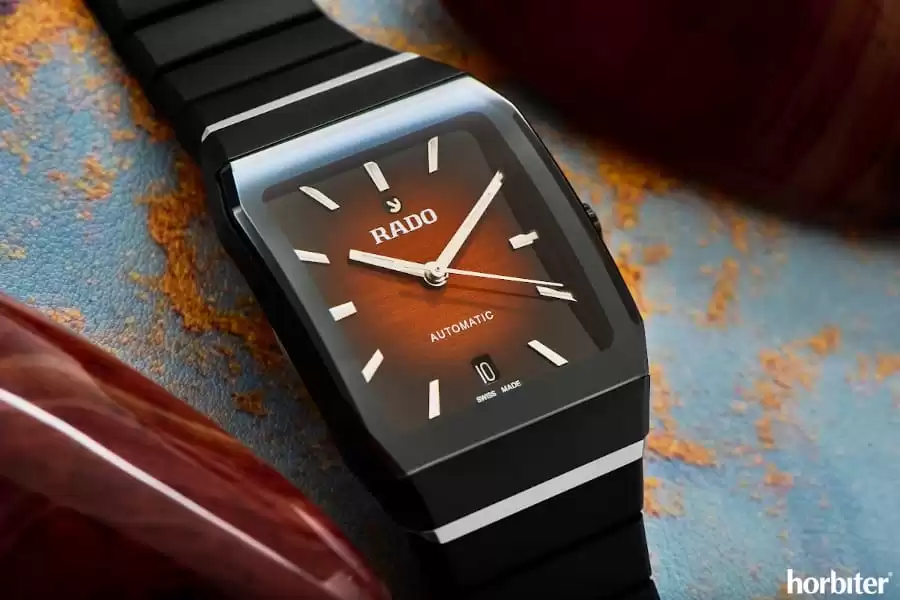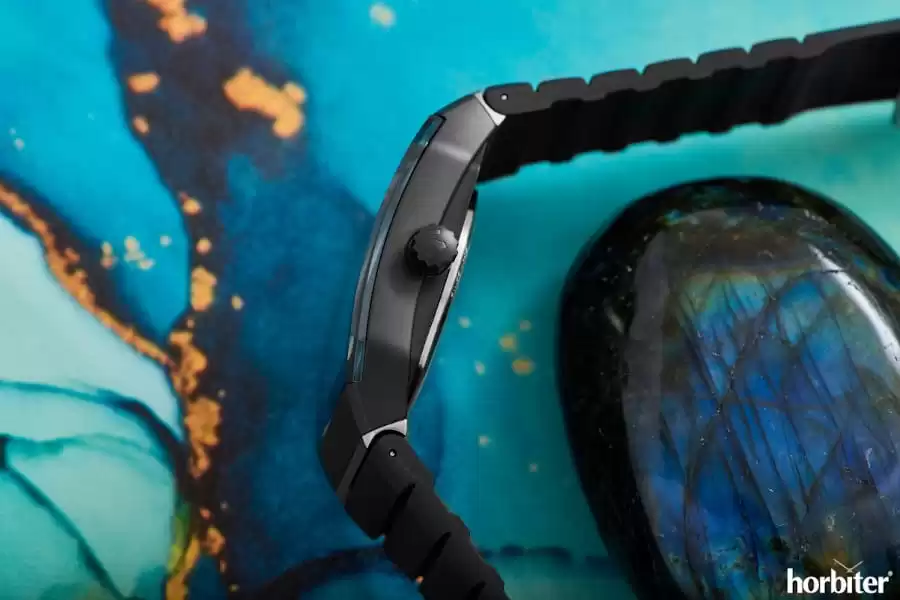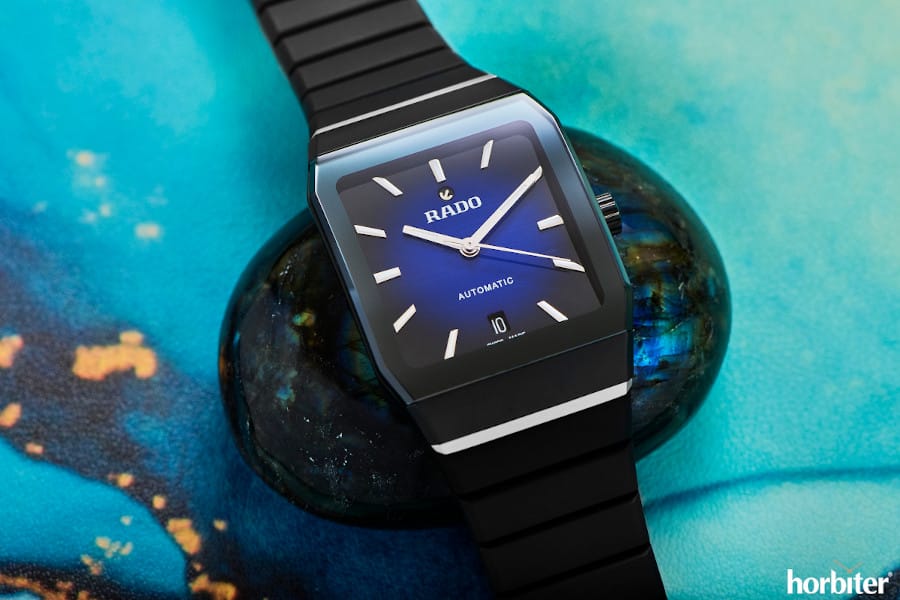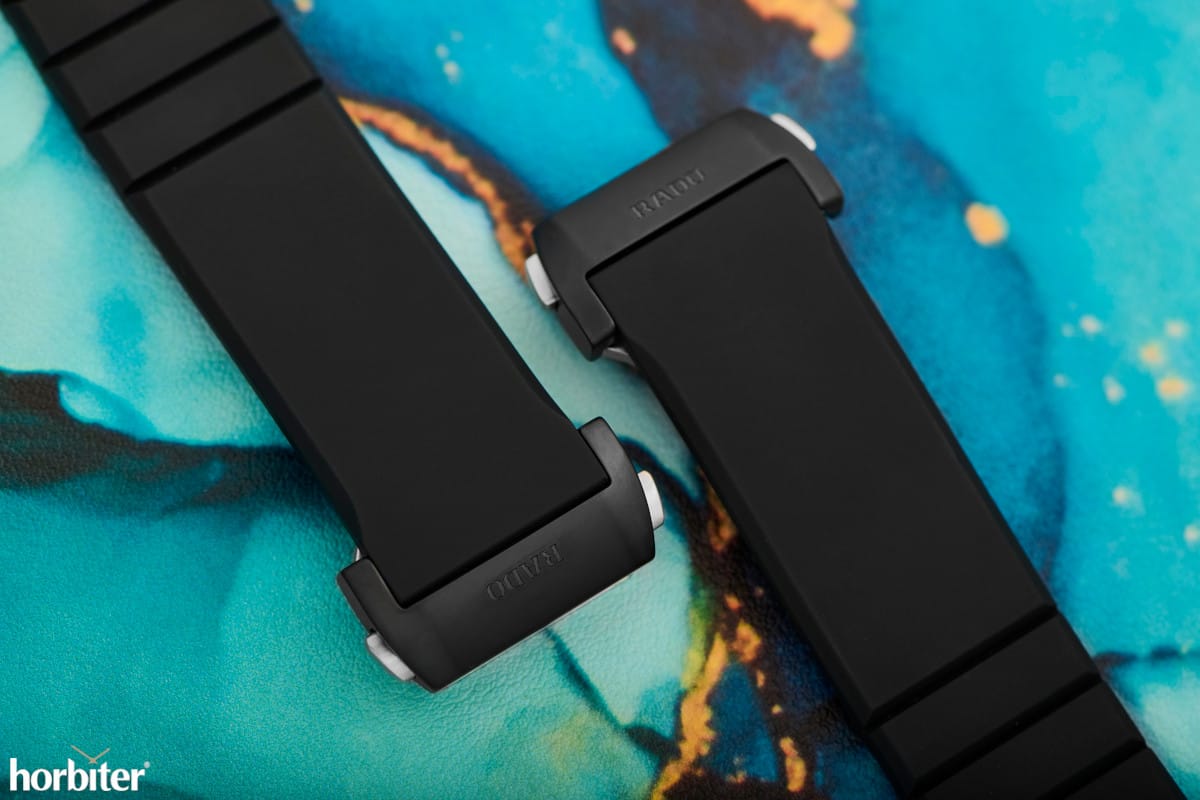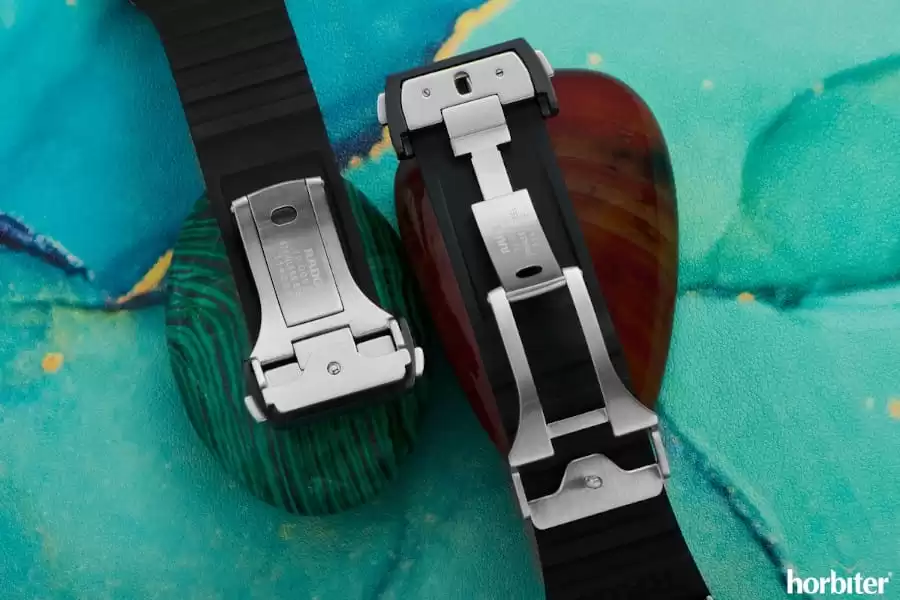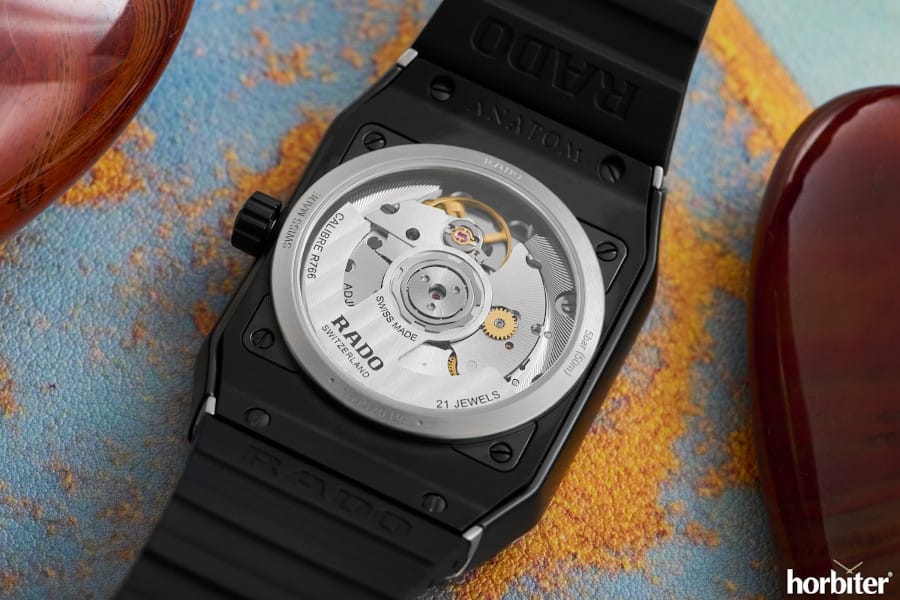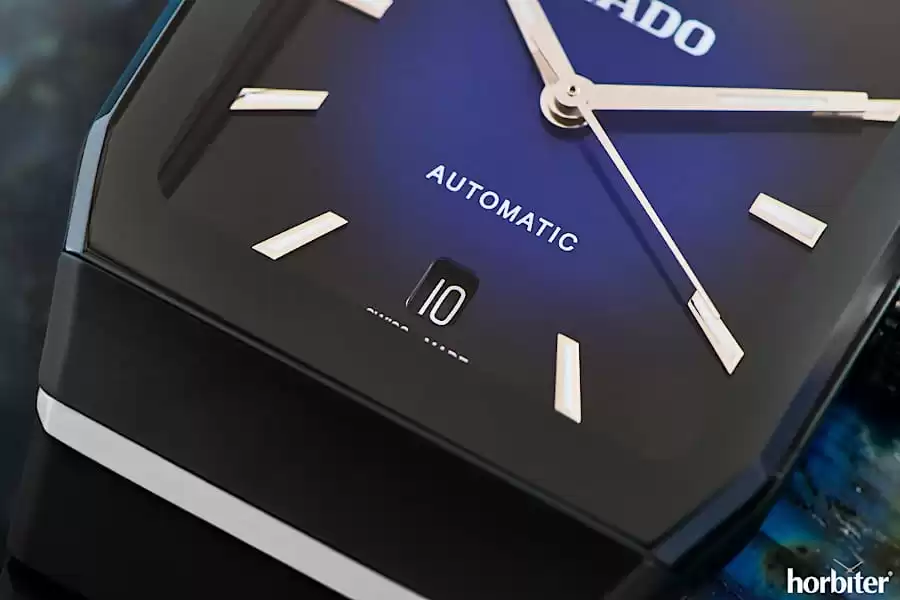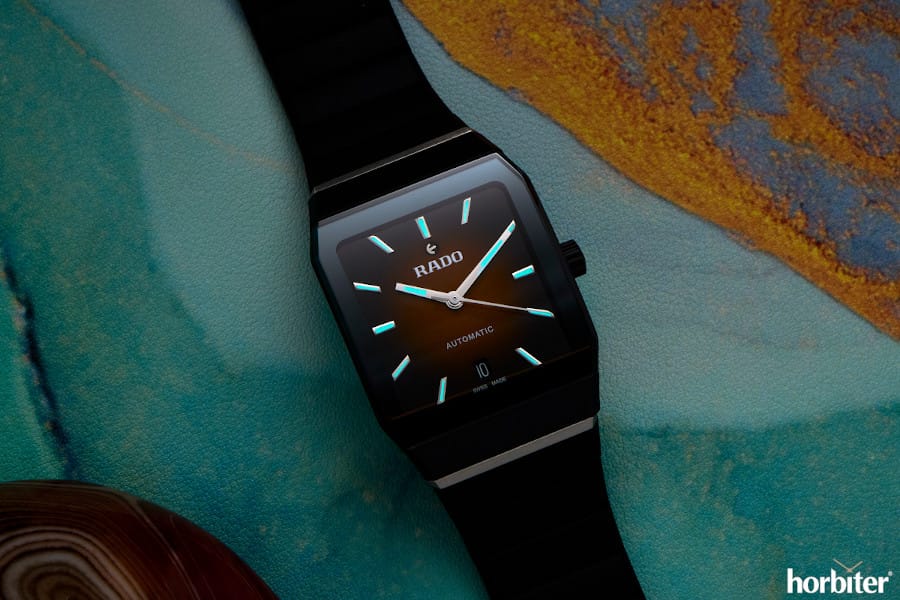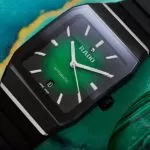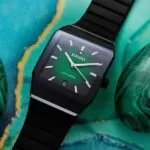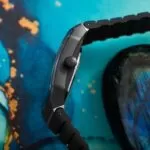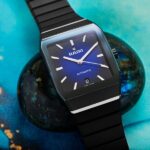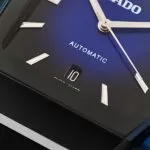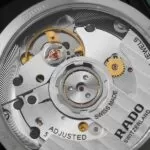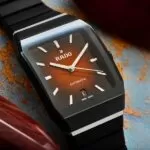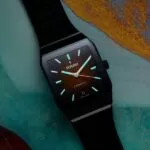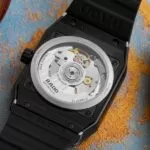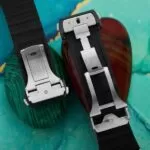Table of Contents
Introduction
When you meet Rado, you observe Swiss Made from a perspective different from traditional watchmaking. An uncommon product philosophy takes over pure mechanical watchmaking for a while as it looks all about a timepiece capable of withstanding the harshest conditions, i.e. the most durable one, whose original look is ever-lasting.
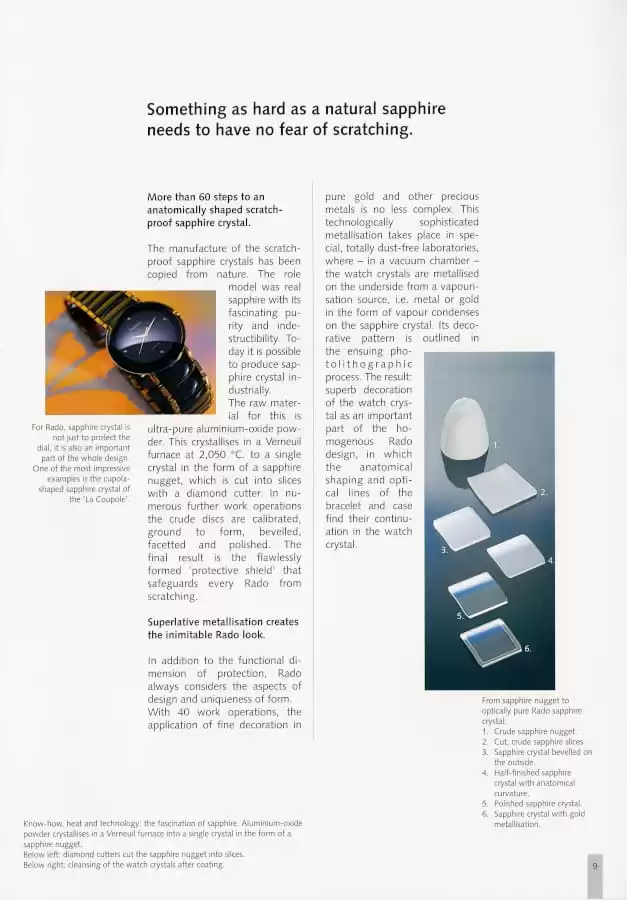
The brand’s timeline has followed an unconventional storyline, whose milestones marked exceptional achievements in new, groundbreaking materials packed into a design that truly belongs to a class of its own. Regarded as the Master of Materials, the brand’s fame took off in 1962 with the DiaStar 1, the first scratch-resistant wristwatch ever and forerunner of the now-legendary DiaStar Original series.
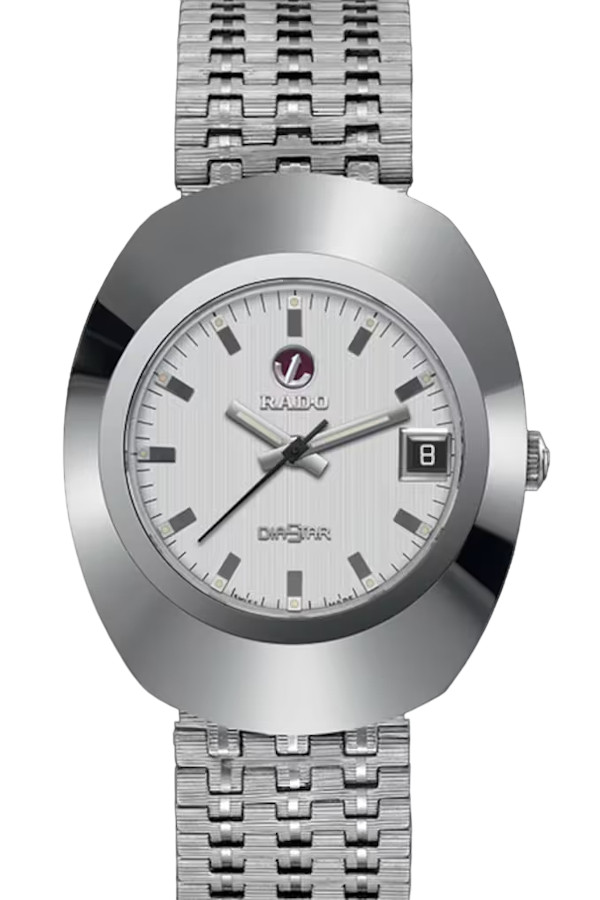
Moving forward, the development of materials has no longer stopped, as has its extraordinary design, whose appreciation gathers boomers and Gen Z enthusiasts with their vintage or modern Rado models.
The road to the DiaStar Anatom
A square or rectangular case shape is not Rado’s exclusive, of course, but it was the platform for achieving technical success while boosting innovation to new heights.
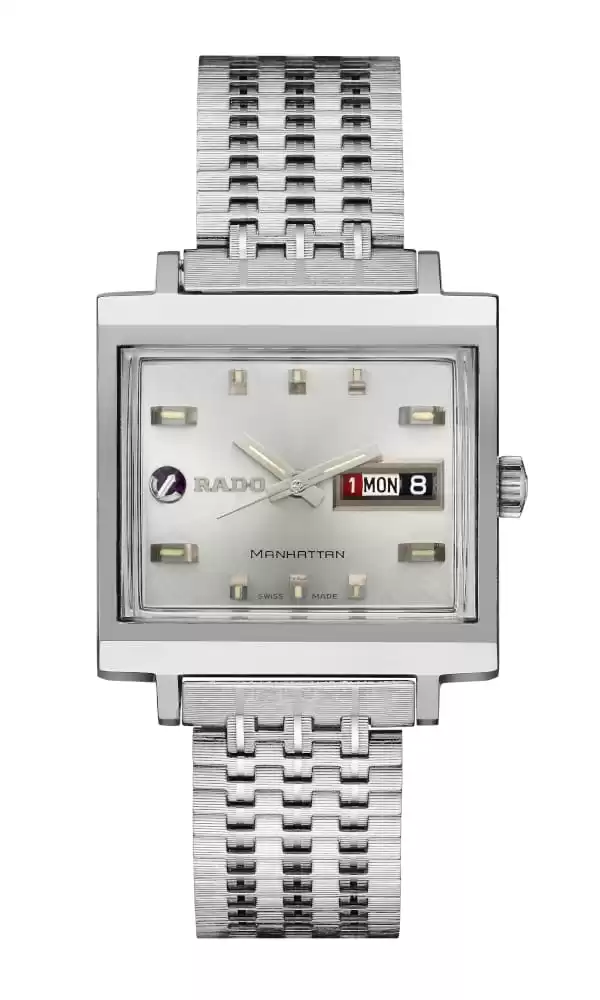
It all began with the Rado Manhattan, a bold new waterproof timepiece.
From Hardmetal to sapphire crystal
Fast forward, Rado unveiled the Glissière in 1978 after releasing an early prototype in 1976. It debuted the integral sapphire crystal, i.e. a flat one whose edges extended all the way over the case’s side for the first time. Back then, when supersonic commercial flights and the first PC were in the headlines, Rado was the undisputed innovative Swiss-made watch brand par excellence.
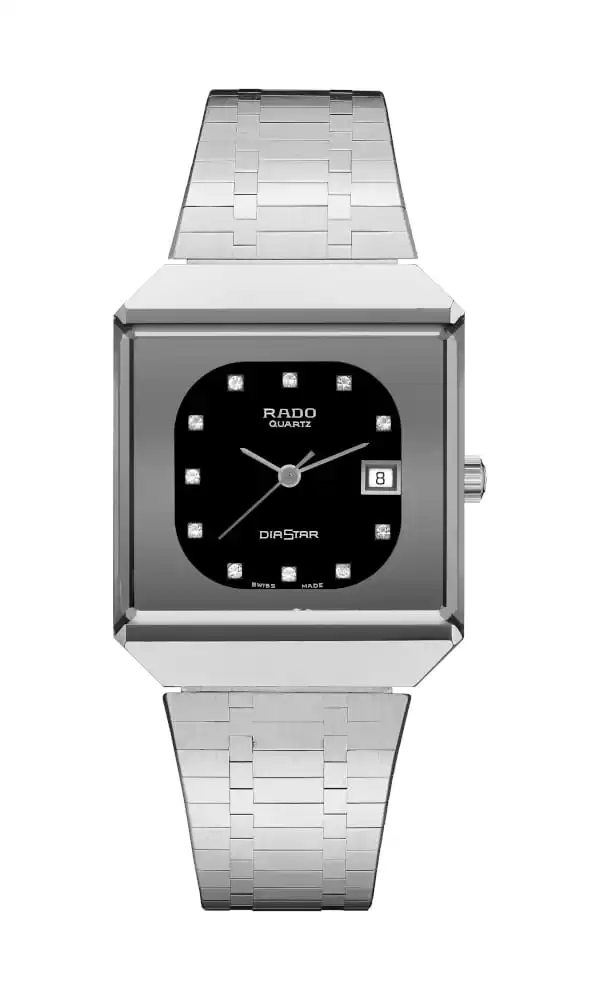
The momentum continued with the V2200 model, which stands for 2200 Vickers, whose glass, like on the Glissière, had bevelled sides.
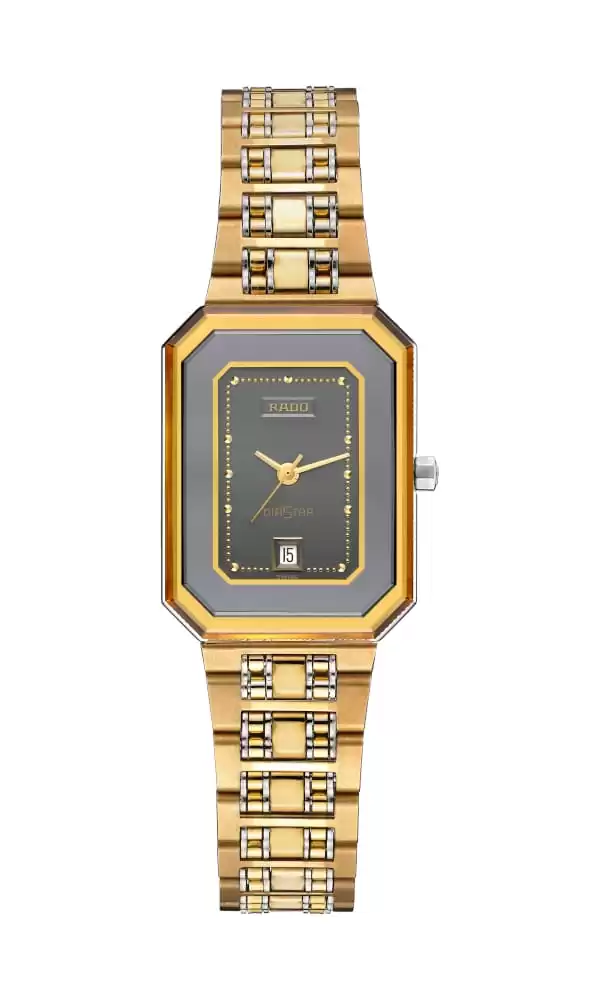
In the 2000s, that project reached its pinnacle with the 2002 V10k crafted in high-tech diamond: there you had it! It was the most resistant watch ever produced.
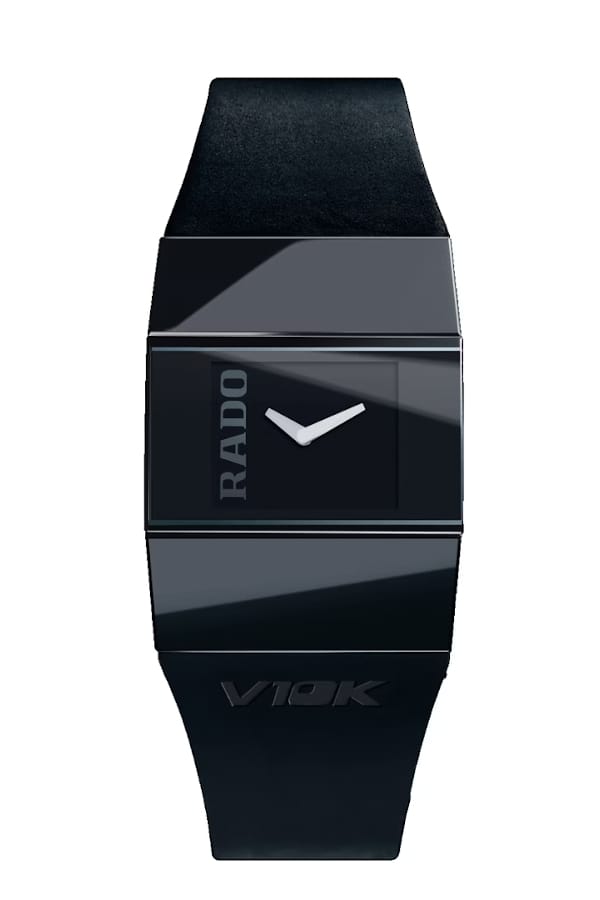
The original Anatom came as a V2200’s evolution, turning such a concept into a curved case and glass design.
The 1983 Rado Anatom, therefore, introduced the first-ever sapphire glass curved on top and bottom sides.
Pleae welcome the 2024 Rado Anatom
Forty years in the making, the watch, “able to adapt to the wrist for perfect comfort”, as the Ad claimed, is back in the business.
2024 marks its forty-first anniversary; here is why Rado did their best to officially unveil the new model range by the end of 2023. The first production pieces are currently hitting the global markets instead.
The anatomic case
Making a design as anatomic as possible is any brand’s desire when sketching a rectangular or square-shaped case, and it has to do with delivering a design that tapers a wearer’s wrist. In 1983, the first Rado Anatom housed a quartz movement, which helped craft a curved case since it enhanced thinness compared to any mechanical movement layout.
The 2024 Anatom stops at 11.3mm and sports a multi-material case whose assembly includes a black PVD-treated steel core and a ceramic cover which extends from the bezel through the case side and integrates, on top and bottom ends, a rubber strap to accommodate it onto the wrist as smoothly as possible.
Such a geometry highlights the slightly curved glass and silhouette. The sapphire glass is a masterpiece of technology and surface finish and comes as a rounded cylindrical sapphire crystal, black metalized and then glued to the bezel.
Three dial options at launch
Ideally, place the old Anatom alongside the new one, and you’ll notice how designers achieved the same shape ratio; wear it, and you’ll be pleased to feel how it gently tapers the wrist despite the flat central case.
What made the project a challenge was delivering the original Anatom’s product feats and philosophy while housing a much heftier self-winding movement. The curved glass covers three intriguing smoked dial variants: each background is glossy-lacquered blue, green, and cognac paired with a horizontally-brushed pattern that makes the watch sophisticated, between a sports watch and a whole black classic timepiece.
Rado has gone for popular colour tones and added a 40-piece limited series model to celebrate the 1990 Jubilee. 11 baguette-cut diamonds here replace the standard applied indexes, while the bezel is in black-polished rather than matte ceramic.
The strap
The new Anatom, as stated above, features a pleasantly soft integrated rubber strap whose pattern reminds the original 80s metal bracelet. It houses a steel folding buckle covered by a Rado-branded matt black ceramic clasp, with the addition of a double safety button and an even more helpful micro-adjustment slider.
We’re pin buckle watch supporters and still believe it’s easier to use and adjust, but we’re aware most customers prefer a folding clasp over a tang buckle, at least by listening to the brands’ voice of customers’ reports.
The RADO caliber R766
Rado made noise with the 1983 Anatom and is making it again with the now-mechanical new Anatom, which brings the collection to the next level. Being the “Master of Materials” won’t mean you double down on mechanical performance and craftsmanship.
There you have it: the watch is powered by the R766 movement, an entire three-day power reserve and a Nivachron™-hairspring equipped timepiece. Don’t blame me for not loving the open case back; the first Anatom came with a solid case back, and so should the new one, in my opinion. While I’d agree I’d never display a quartz calibre, I also point out that what made the Anatom so looked after is that one-piece design I would promote anytime, anywhere.
Final thoughts
Welcome back, Rado Anatom, and thank you, Rado, for adding something new and unseen to the market, which is flooded with lots of mainstream designs. It is not a revolutionary watch as its forerunner was and won’t be either. Nonetheless, it sports an uncommon, well-balanced design with a proper background of innovation and milestones.
Rado has focused their efforts on making it a luxurious, stand-out model, thanks to the eye-pleasing glass-to-dial combination. It feels very Rado Ceramica from the nineties. However, we would have gone for more ceramic in the case-making. The Rado Anatom retails for 3,800 Euros, placing itself above the average only-time Rados and much more as a flagship model.
We like it and appreciate the effort and the soft rubber strap, but we can’t stop imagining what’s next in the product’s pipeline. Sooner or later, we’ll welcome a fully integrated bracelet Anatom and, why not, an ultra-flat design, too. Here is a template most enthusiasts are searching for nowadays: self-winding or quartz-operated, it doesn’t matter. For more information, visit the official Rado website.
(Photo credit: Horbiter®)
Giovanni Di Biase @Horbiter®


